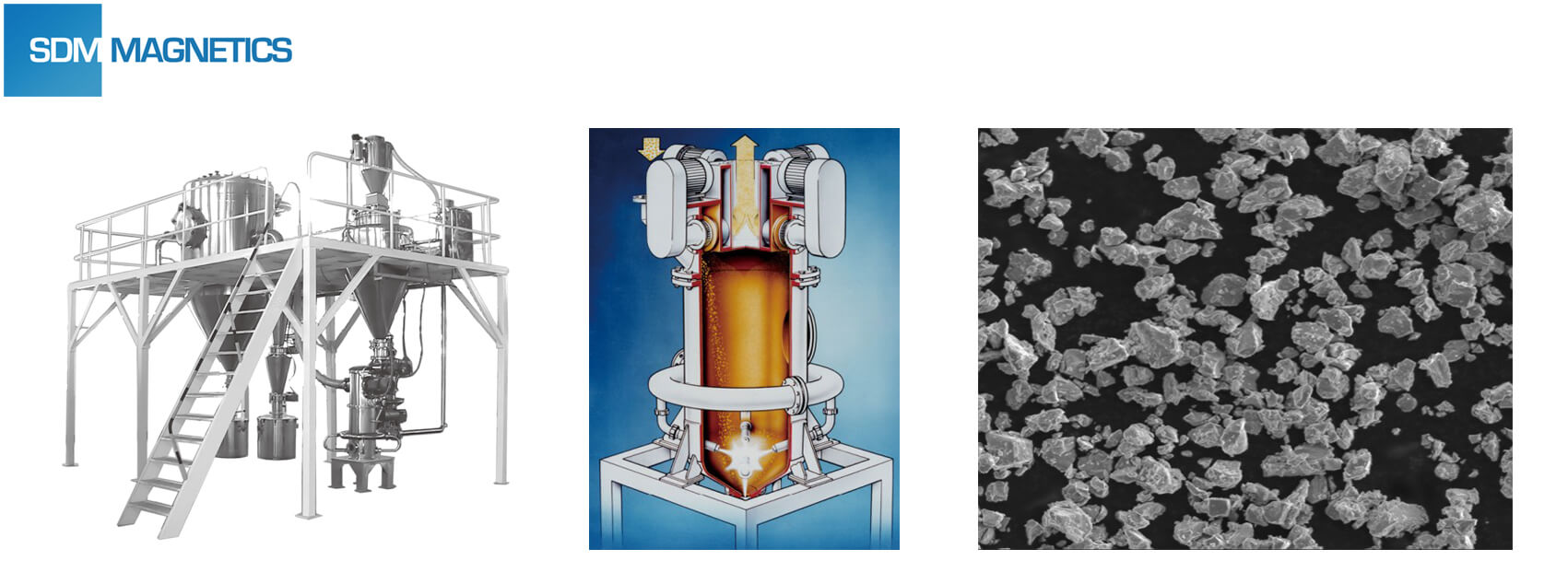The basic purpose of powder process is seeking appropriate particle shape, average particle size, and particle size distribution. The difference of above features exhibits different apparent density, tap density, angle of repose, flowability, compression ratio, and friction coefficient in macroscopic scales which directly impact on powder filling, magnetic field orientation, compacting, demolding and microstructure generated in sintering process, thereupon then sensitively influence magnetic performance, mechanical properties, thermoelectricity, and chemical stability of magnet. The ideal microstructure of sintered magnet is fine and uniform main phase grain surrounded by smooth and thin additional phase. In addition, easy magnetization direction of main phase grain should be arranged along orientation direction as consistent as possible. Besides pinning-typed Sm2Co17, voids, large grains, or larger size soft magnetic phase in other sintered rare earth magnets will lead to significantly reduce in intrinsic coercivity. Remanence and squareness of the demagnetization curve will simultaneously decrease while easy magnetization direction of grain deviate from the orientation direction. Thereby, alloys should be pulverized to the single-crystal particle ranging from 3 to 5 microns in particle size. Jet milling has proven to be the most practical and efficient solution in powder process. Jet milling utilizing a high speed jet of inert gas to accelerate coarse powder which made by hydrogen decrepitation or mechanical crushing to supersonic velocity and impact powder into each other.

